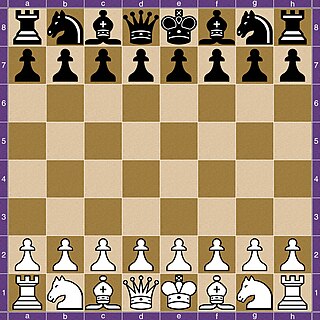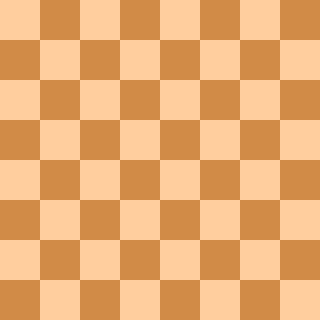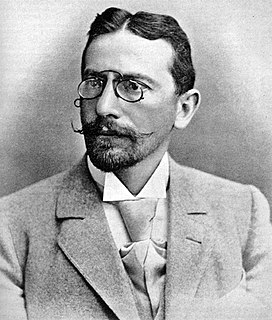 W
WThe game of chess is commonly divided into three phases: the opening, middlegame, and endgame. There is a large body of theory regarding how the game should be played in each of these phases, especially the opening and endgame. Those who write about chess theory, who are often also eminent players, are referred to as "theorists" or "theoreticians".
 W
WCheckmate is a game position in chess and other chess-like games in which a player's king is in check and there is no way to avoid the threat. Checkmating the opponent wins the game.
 W
WA chess diagram is graphic representation of a position in a chess game, using standardised symbols. Chess diagrams are widely used in chess publications as an aid to visualisation, or to aid the reader to verify that they are looking at the correct position on their chessboard or computer. The symbols used generally resemble the pieces of the standard Staunton chess set, but a number of different fonts have been used over the centuries.
 W
WThe middlegame in chess is the portion of the game in between the opening and the endgame, though there is no clear line between the opening and middlegame, and between the middlegame and endgame. The middle game begins when both players have completed the development of all or most of their pieces and the king has been brought to relative safety. However, at master level, the opening analysis may go well into the middlegame.
 W
WA chess opening or simply an opening refers to the initial moves of a chess game. The term can refer to the initial moves by either side, White or Black, but an opening by Black may also be known as a defense. There are dozens of different openings, and hundreds of variants. The Oxford Companion to Chess lists 1,327 named openings and variants. These vary widely in character from quiet positional play to wild tactical play. In addition to referring to specific move sequences, the opening is the first phase of a chess game, the other phases being the middlegame and the endgame.
 W
WIn chess, there is a general consensus among players and theorists that the player who makes the first move (White) has an inherent advantage. Since 1851, compiled statistics support this view; White consistently wins slightly more often than Black, usually scoring between 52 and 56 percent. White's winning percentage is about the same for tournament games between humans and games between computers; however, White's advantage is less significant in blitz games and games between novices.
 W
WThe Philidor position usually refers to an important chess endgame which illustrates a drawing technique when the defender has a king and rook versus a king, rook, and a pawn, though it can also refer to a position in the queen versus rook endgame or a position in a rook and bishop versus rook endgame. In the case of a rook and pawn versus a rook, it is also known as the third rank defense, because of the importance of the rook on the third rank cutting off the opposing king. It was analyzed by François-André Danican Philidor in 1777. Many rook and pawn versus rook endgames reach either the Philidor position or the Lucena position. If played accurately the defending side tries to reach the Philidor position; the other side tries to reach the winning Lucena position. Some consider this to be one of the most important positions in endgame theory".
 W
WThe queen and pawn versus queen endgame is a chess endgame in which both sides have a queen and one side has a pawn, which they are trying to promote. It is very complicated and difficult to play. Cross-checks are often used as a device to win the game by forcing the exchange of queens. It is almost always a draw if the defending king is in front of the pawn.
 W
WThe rook and pawn versus rook endgame is of fundamental importance to chess endgames, ,, , and has been widely studied, . Precise play is usually required in these positions. With optimal play, some complicated wins require sixty moves to either checkmate, win the defending rook, or successfully promote the pawn. In some cases, thirty-five moves are required to advance the pawn once.
 W
WThe Tarrasch rule is a general principle that applies in the majority of chess middlegames and endgames. Siegbert Tarrasch (1862–1934) stated the "rule" that rooks should be placed behind passed pawns – either yours or your opponent's. The idea behind the guideline is that (1) if a player's rook is behind his passed pawn, the rook protects it as it advances, and (2) if it is behind an opponent's passed pawn, the pawn cannot advance unless it is protected along its way.
 W
WIn chess and other chess-like games, a tempo is a "turn" or single move. When a player achieves a desired result in one fewer move, the player is said to "gain a tempo"; conversely, when a player takes one more move than necessary, the player is said to "lose a tempo". Similarly, when a player forces their opponent to make moves not according to their initial plan, one is said to "gain tempo" because the opponent is wasting moves. A move that gains a tempo is often called "a move with tempo".
 W
WThe two knights endgame is a chess endgame with a king and two knights versus a king. In contrast to a king and two bishops, or a bishop and a knight, a king and two knights cannot force checkmate against a lone king. Although there are checkmate positions, the superior side cannot force them against proper, relatively easy defense.
 W
WThe wrong bishop is a situation in chess endgame when a bishop on the other color of square of the chessboard would either win a game instead of draw or salvage a draw from an inferior position ; in other words, a bishop is unable to guard squares of the other color. This most commonly occurs with a bishop and one of its rook pawns, but it also occurs with a rook versus a bishop, a rook and one rook pawn versus a bishop, and possibly with a rook and one bishop pawn versus a bishop.